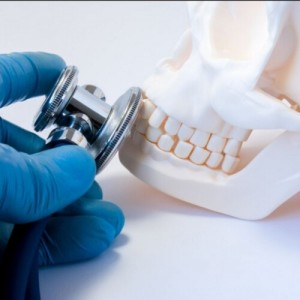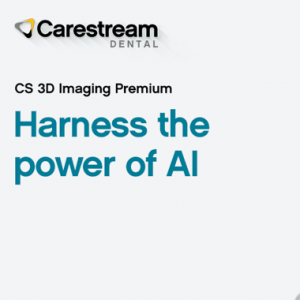
Are splints in periodontal therapy still a dilemma?
Edoardo Mancuso
Clinical management of periodontally compromised teeth with advanced mobility remains an arduous challenge to the dentists.
Splints are being used to overcome these problems.
However, the value of splinting has been debated for a long time and most of the benefits of the splinting have been reported mostly from clinical observations than from scientific evaluations. According to the glossary of prosthodontic terms, a splint is defined as “a rigid or flexible device that maintains in position a displaced or movable part.”
Splinting the teeth to each other allows distribution of forces from mobile teeth to their immobile neighbours, thereby gaining support from the stronger teeth. This might prolongs the life expectancy of the loose elements, giving stability for the periodontium to reattach, and improves comfort, function and aesthetics. In an interesting review published on the International Journal of Research in Health and Allied Sciences in the late 2018, Professor Mangla et al. explore the different type of splints present on the market and their clinical indications.
The review cite as indications for the splinting the following:
1) Stabilize moderate to advanced tooth mobility that cannot be reduced by other means and that has not responded to occlusal adjustment and periodontal therapy.
2) Stabilize teeth in secondary occlusal trauma.
3) Stabilize teeth after orthodontic movement.
4) Stabilize teeth after acute dental trauma i.e. subluxation, avulsion.
5) Prevent extrusion of unopposed teeth. Is specified that regarding the first of the indications listed, in the absence of periodontal disease, the most likely cause of tooth mobility is primary occlusal trauma.
In these cases increase in mobility may be reduced by occlusal adjustment alone by eliminating the occlusal interferences. In cases where occlusal adjustment will not be able to reduce the tooth mobility, reduction of mobility can only be achieved by using a splint. Splinting in such situations is only indicated if the mobility disturbs the patient’s masticatory function or chewing comfort or aesthetics. In a study to determine the effect of initial preparation and occlusal adjustment on tooth mobility, it was observed that for teeth with initial mobility greater than 0.2 mm there was a decrease in tooth mobility up to 20%.
Depending on the duration of use, splints are classified as temporary, provisional or permanent and may be either fixed or removable. And according to the location on the tooth splints could be classified as intracoronal and extracoronal. There have been considerable advancements in the materials used for splinting, resulting in fewer ill effects, but still, the simplest and more efficient way to connect teeth to each other is the classic bonding method, using a composite resin to rigidly connect the teeth to each other. The mechanical properties of the composite resin splint should be improved by adding metal wires, fibers or by using a fiber meshwork.
A variety of reinforcement fibers are available for use with composite: Open weave glass fiber, woven polyethylene, glass fiber ribbon.
The challenge to place a thin but strong composite-based splint has been met with the introduction of a high strength, bondable, biocompatible, aesthetic and easily manipulated color neutral fiber that can be embedded in the resin structure. The added advantage is that this fiber also binds chemically with resin structure.
The article concludes suggesting that when facing with the dilemma of how to manage periodontally compromised teeth, splinting of mobile teeth to stronger adjacent teeth is a viable option. This prolongs the life expectancy of loose teeth, gives stability for the periodontium to reattach, and improves comfort, function and aesthetics. A suitable treatment option for periodontally compromised teeth with poor prognosis can also be to retain the teeth for a longer time by using splints, until a more definitive treatment is planned for the patient. Everyday more splints are becoming an integral part of periodontal therapy and maintenance, however, it should be noted that splinting itself will not eliminate the cause of tooth mobility. They are only an aid in stabilizing the mobile tooth, and mobility may revert once the splints have been removed. Hence, splinting is an essential adjunct but only in addition to cause-related therapy in the treatment of mobile teeth.
(Photocredit: Dr. Edoardo Mancuso, Dr. Massimo Fuzzi)
For additional information: Splinting- a dilemma in periodontal therapy
 Related articles
Related articles
Periodontology 10 October 2025
Continuous professional development (CPD) in Periodontology refers to the overall framework of opportunities that facilitate a life-long learning practice, driven by the learner-practitioner and...
Periodontology 10 September 2025
To update the findings of a systematic review from the year 2016 on the evidence for the accuracy and potential benefits of cone beam computed tomography (CBCT) in periodontal diagnostics.
Periodontology 27 August 2025
The purpose of this study was to evaluate the views, knowledge and preferences of a large sample of practising dentists in periodontics, focusing specifically on the treatment of gingival recessions,...
Aggressive periodontitis is a destructive disease characterized by the following: the involvement of multiple teeth with a distinctive pattern of periodontal tissue loss; a high rate of disease...
This review discusses the principles of polymerase chain reaction (PCR) and its application as a diagnostic tool in periodontology.
 Read more
Read more
Oral pathology 24 October 2025
Isolation and characterization of dental pulp stem cells from a supernumerary tooth
Dental pulp stem cells (DPSCs) were primarily derived from the pulp tissues of primary incisors and permanent third molar teeth, whereas no report to our knowledge has yet been documented on deriving...
Editorials 24 October 2025
From mentoring workshops to leadership insights, the last week’s IU School of Dentistry (IUSD) fall faculty conference and staff retreat brought faculty and staff together respectively for two days...
Products 24 October 2025
At the American Academy of Periodontology’s Annual Meeting, Carestream Dental continues to deliver what’s next in dentistry with the launch of CS 3D.
News 24 October 2025
As dental professionals prepare to wrap up 2025, many are setting ambitious goals for the year ahead, yet few have a clear, actionable plan to achieve them.
News 24 October 2025
The Yankee Dental Congress will take place from January 29, 2026, through January 31, 2026, at the Thomas M. Menino Convention & Exhibition Center in Boston.















